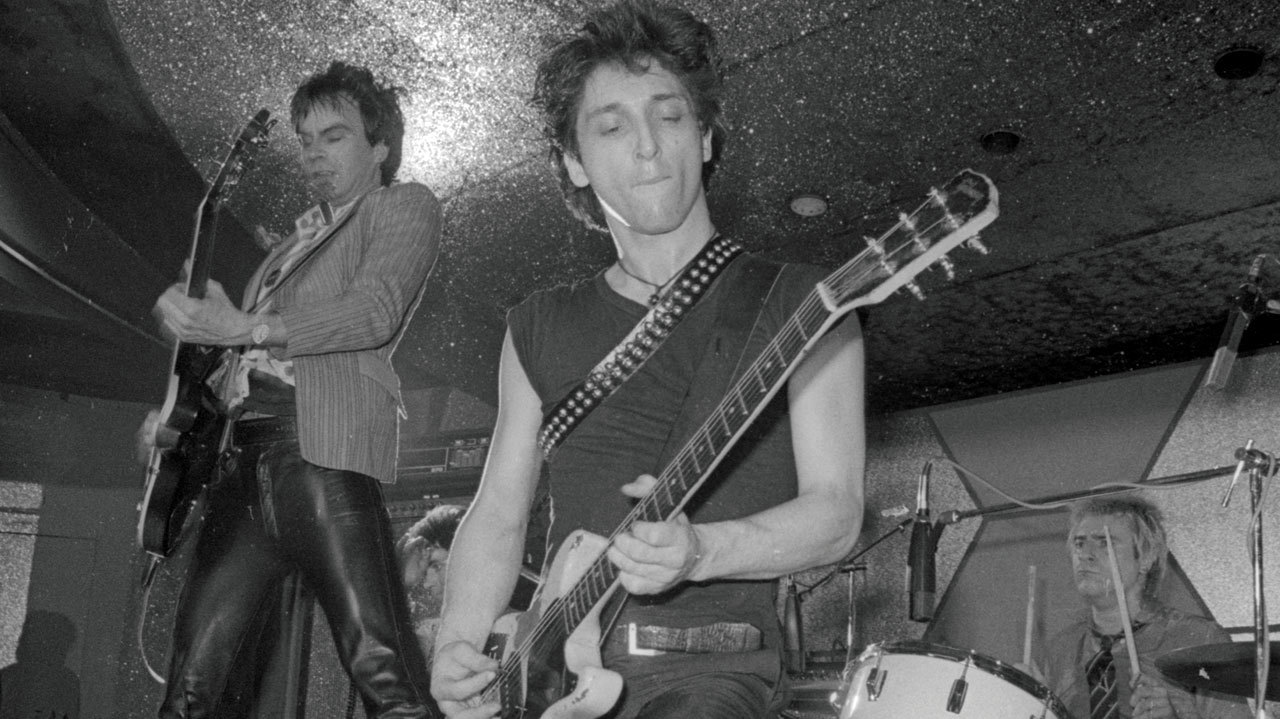The Heartbreakers had no idea what was coming. They were up in the air, on a plane bound for London from New York, when the Sex Pistols dropped the F-bomb on prime-time TV. This was their infamous potty-mouthed exchange with Bill Grundy, belligerent host of the Today show. The switchboards were still flashing when The Heartbreakers touched down.
Walter Lure remembers that night well. “Malcolm McLaren and Sophie [Richmond], his second in command, picked us up at the airport in the limo,” says The Heartbreakers’ then-guitarist, recalling the events of December 1, 1976. “Malcolm’s eyes were twirling around like he’d been knocked on the head with a hammer. He was going: ‘Oh my God, this crazy TV show’s just happened and the newswires are going nuts!’
“Everyone was screaming about it, and the next morning all the newspapers were full of it. To me, saying ‘fuck’ on TV was such a weird thing to get excited about, but you couldn’t buy that publicity in a million years.”
The Heartbreakers had unwittingly landed in the eye of a storm. The Pistols may have suddenly become tabloid news – prompting the Daily Mirror headline ‘The Filth And The Fury!’ – but they were now the most notorious gang in Britain. Battle lines were drawn between these unruly oiks and the rest of the country.
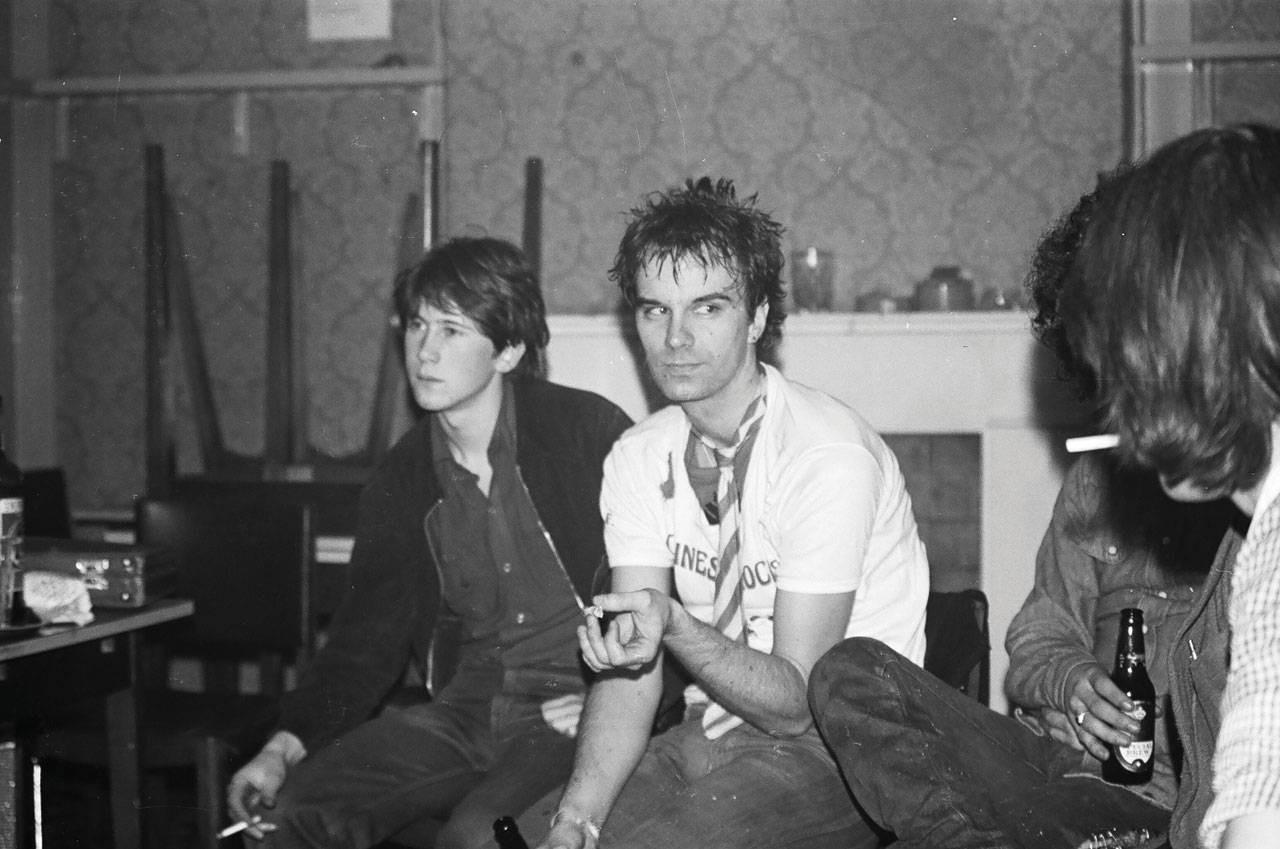
The Heartbreakers had flown in to join the Pistols, alongside the Clash and The Damned, for the Anarchy tour. By the time it began, outraged local councils had ensured that the tour had been decimated from a proposed 19 dates to just three. There wasn’t much to do in the downtime, other than hang out and get drunk. For Lure and his bandmates – New York Dolls founders Johnny Thunders and Jerry Nolan, plus bassist Billy Rath – this meant a swift education in UK punkdom.
“The whole scene was madness,” Lure recalls. “Kids with safety pins and coloured hair, which reminded me of the Dolls. Johnny Rotten was trying to be a nasty little prick on tour, to establish his persona as a scumbag. He was a great guy when we’d be hanging out in hotel bars, but as soon as somebody came in from outside, his whole personality would change. The first night that Steve Jones and Paul Cook met us in the lobby, they were hiding in the background. We thought they were trying to be obnoxious, but we found out later that they just didn’t know what to say to Johnny and Jerry, who were their idols.”
Despite the farcical nature of the Anarchy tour, The Heartbreakers had made an impression. They decided to stay on in London, where they played regular gigs at The Roxy, ahead of a fresh wave of New York arrivals such as Wayne County and Cherry Vanilla. Manager Leee Childers secured them a flat in Pimlico and negotiated a deal with Track Records. The future looked promising. For a while, at least…
The Heartbreakers had emerged from the ruins of the New York Dolls in May 1975. Initially a core trio of guitarist Thunders, drummer Nolan and former Television bassist Richard Hell, Lure was brought in not long after their first gig, in Queens. Previously a member of several local bands, most recently The Demons, Lure was aware of a growing schism between Thunders and Hell. The matter was finally resolved when Hell formed The Voidoids. His vacated spot was filled by Rath.
This line-up patented the Heartbreakers sound, which welded the glammy trash-punk of the Dolls to classic rock’n’roll. And the band were soon swept along by the fast-rising underground movement in New York, centred on CBGB in the East Village, host to other unsigned acts including Patti Smith, Television, the Ramones, Blondie and Talking Heads.
“There was definitely a whole community thing going on,” says Lure. “It was the New York scene and we were a part of it, whether it was hanging out with Debbie Harry or David Byrne or whoever. There were rivalries later, but it was pretty diverse between bands like Talking Heads and Television, who were almost diametrically opposed to The Heartbreakers. We didn’t even have any management at that time.
“The main thing was that we’d all been brought up with – and ate, drank and breathed – solid, fast rock’n’roll. That’s what we all loved. I guess you could call us the only authentic rock band in the city, especially as it evolved from the Dolls, which to me was the primal New York band.
“Johnny and Jerry were really the soul of the Dolls. David Johansen had a great voice, but he was a megalomaniac. They both resented David a lot, because he sort of ran the Dolls and was the mouthpiece. That was the main reason they left, apart from the fact the Dolls weren’t having any success in terms of selling records.”
The other thing that set The Heartbreakers apart, even amid the toxic environment of 70s New York, was their prodigious drug intake. Heroin was the band’s preferred choice. Accordingly, Thunders proposed they change their name.
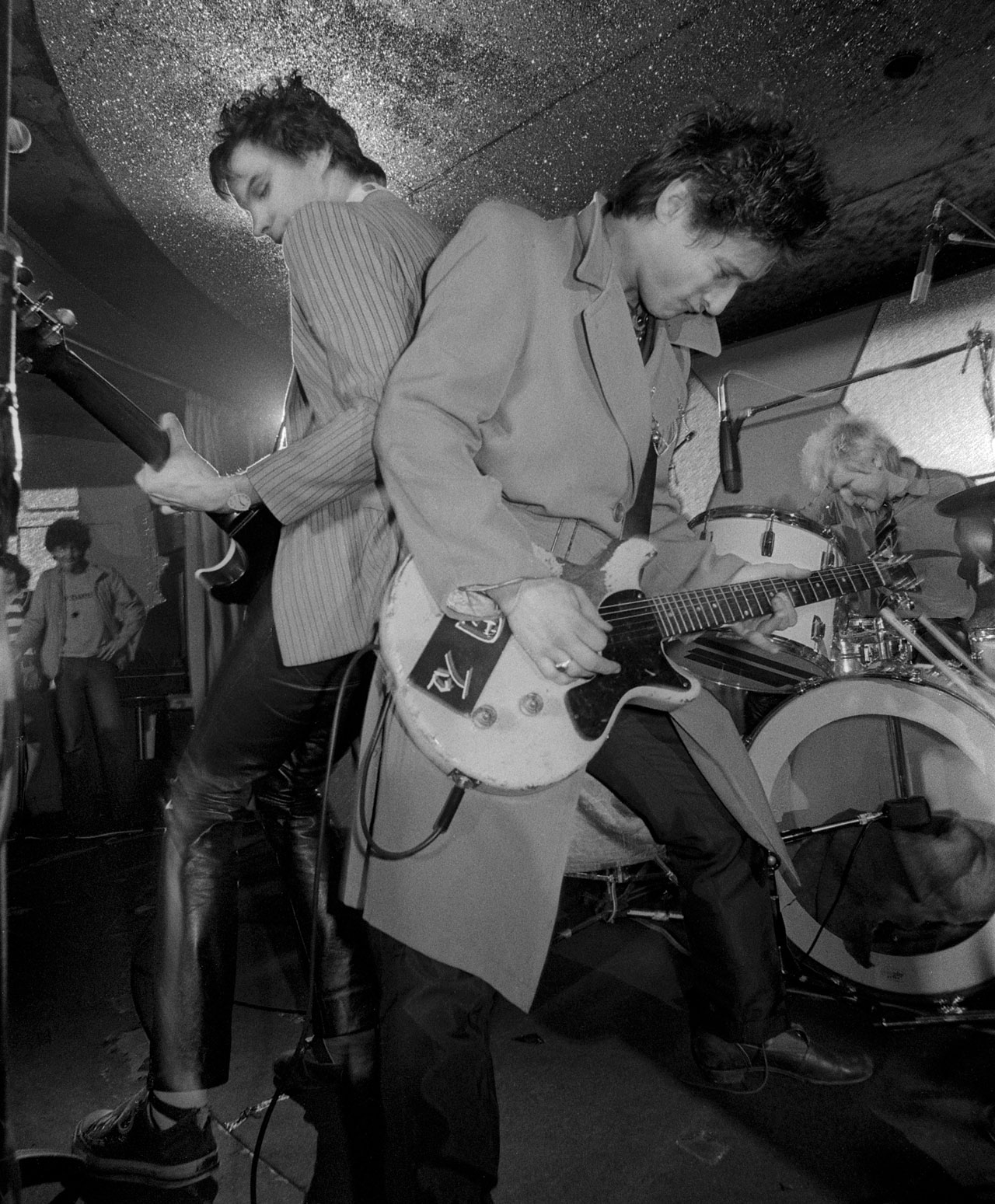
“Johnny and Jerry thought it would be outrageous to call the band The Junkies. But we also knew we couldn’t do that and actually be junkies, because we’d invite ourselves to get arrested every time we played. I mean, we couldn’t even rehearse until everyone had gotten high. It would’ve been the kiss of death.”
The Heartbreakers led an abusive lifestyle nonetheless, their habits leaving track marks all over songs like Too Much Junkie Business and Chinese Rocks, co-written by Dee Dee Ramone. Gigs were often precarious events, neither band nor fans knowing which version of The Heartbreakers was going to show up. On a good night they were unstoppable; at other times they were a mess.
Lure suggests, only half-jokingly, that the reason they inspired such intense devotion was partly due to people “turning up to see whether Johnny was going to live or die. We didn’t know that he was going to end all fucked-up. We should’ve caught it right away. There were three or four times in New York when he was totally unconscious before we went on stage. He’d be ’Luded, lying on the ground, with bubbles coming out of his mouth.
“Irving Plaza was probably the worst, because he’d gone up and down the lines outside before the show, asking people for drugs. People were putting pills and everything else in his hand, and he was just swallowing them like crazy. By the time we were ready to go on stage he’d already collapsed. He was breathing, so we decided to just leave him there. Which probably wasn’t the most sensitive attitude to take. But every time it happened we’d have already done a song or two, there’d be a little movement in the audience and he’d stumble onto the stage. People would be cheering and shit.
“The one at Irving Plaza was so bad because he kept on playing the same song over and over, until finally we just pulled the plug on him and he ended up singing to the wall.”
It was obvious that The Heartbreakers weren’t built to last. But their switch to London did at least afford them the chance to leave some kind of legacy on record. Ushered into the studio in the early months of 1977, the band set about recording what turned out to be their sole album.
- What happened when the Sex Pistols appeared on the Bill Grundy show
- The story behind Sex Pistols' Never Mind The Bollocks album artwork
- Sex Pistols memorabilia torched on River Thames
- Every song on the Sex Pistols' Never Mind The Bollocks ranked from worst to best
L.A.M.F., its title an acronym of New York slang term Like A Mother-Fucker, should have been an ideal showcase for The Heartbreakers’ degenerate punk’n’roll. The album delivered a barrage of bruising treasures, from Born To Lose and Chinese Rocks to One Track Mind and Get Off The Phone. The latter took its cue from Bowie’s Hang On To Yourself, which Lure had covered during his college days with one of his first bands, Bloodbath. The seed of One Track Mind dated back even further.
“I’d heard that chord progression years earlier, when lots of kids were playing it,” explains Lure, “so it was always in the back of my mind. When The Heartbreakers first started writing songs, I brought it in one day and the others loved it. But then Hell insisted he had to sing it right away, so he wrote the lyrics to Love Comes In Spurts. I decided to write new lyrics for it after he finally left and call it something else. I might have actually finished One Track Mind while we were in England.”
Among a number of songs that didn’t make the final cut for the album was London Boys, a Lure-Thunders song informed by their new-found allies in England.
“With the music, I deliberately took something by the Pistols, maybe God Save The Queen or something like that, and turned the chords around to make it more upbeat,” Lure recalls. “The basic idea was to have a Pistols thing going on. They were my favourites out of that whole crop of British bands.”
Another tune, Too Much Junkie Business, became the subject of some friction between Thunders and Lure: “That one popped out of my head in two seconds. Originally I’d thought of doing a song along the lines of Chuck Berry’s Too Much Monkey Business. I already had the lines and melody, but it didn’t fit that progression. Then I started playing the Dolls’ version of [Bo Diddley’s] Pills and found it was perfect for that, so I just changed the key. Johnny was pissed off because he always wanted to put his name on it, on one of the later reissues of L.A.M.F. He used to go around telling people that he helped me write it, but he didn’t do anything.”
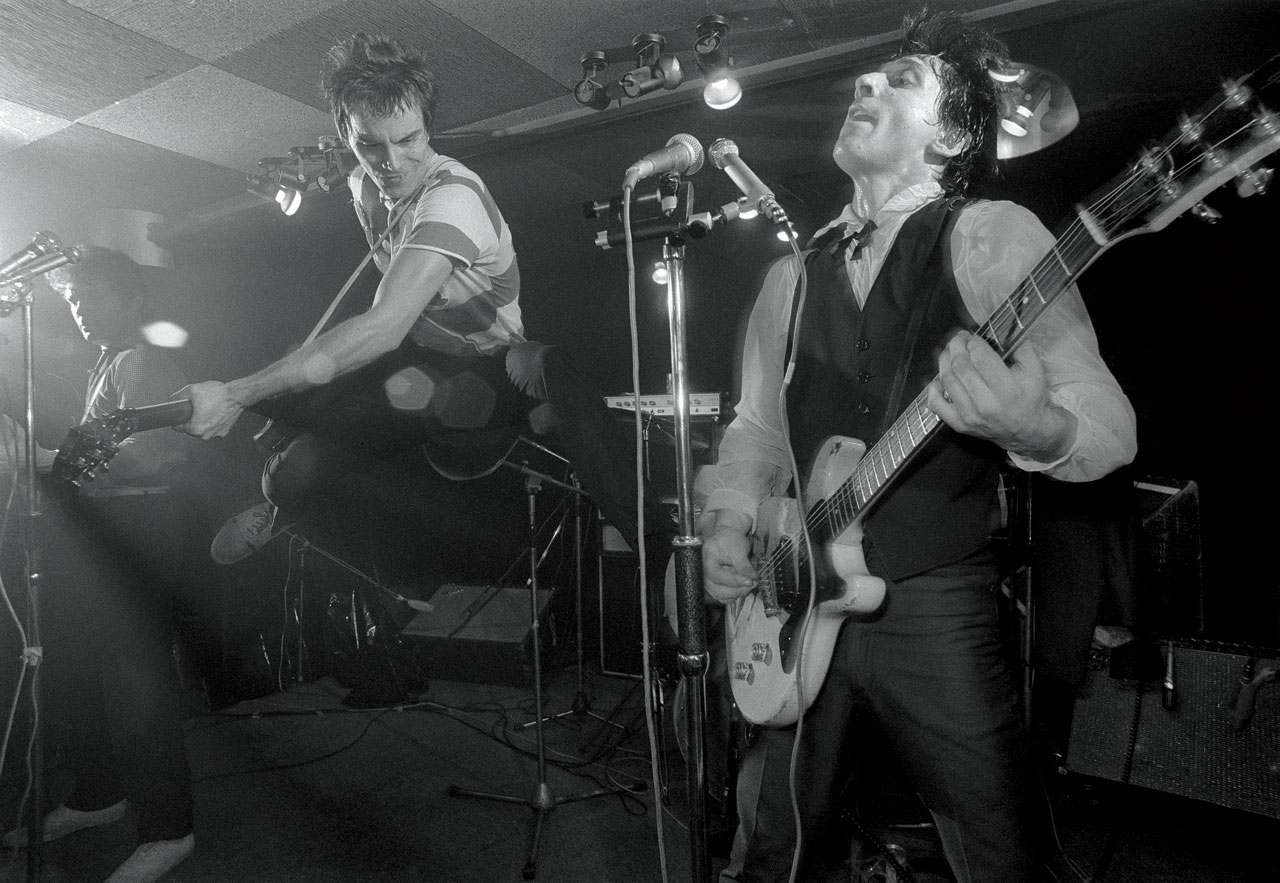
Alas L.A.M.F. suffered from an appalling mix by Track Records’ in-house producer Speedy Keen, who also oversaw Motörhead’s debut that year. Led by an affronted Jerry Nolan, the band attempted to rectify the muddy sound themselves. It was a process that dragged on for some months, before Track finally lost patience and sanctioned the release of the original mix in October ’77.
The press were equally horrified by the results. Live, The Heartbreakers were tight, loud and aggressive; on record they were merely murky. The NME raged that the band had been “mutilated beyond all dignity. Speedy Keen and [co-producer] Daniel Secunda deserve at the very least to have their ears cut off.”
Worse was to follow. Nolan quit, and within months Track ceased operations. Interviewed for Stephen Colegrave and Chris Sullivan’s Punk, Childers recalled having “to pay this little kid to climb up the drainpipe of their office and get us our twenty-four-track tapes back. It was a nightmare.”
Years later, it was discovered that the problem with L.A.M.F. was a recurrent mastering flaw, rather than the mix itself.
“At times I just think it was the curse of Johnny and Jerry, because they’d had the same problem with the Dolls,” says Lure. “The Dolls sounded great live, but the two albums didn’t capture that at all. L.A.M.F. was great on tape in the studio, but as soon as it came out on vinyl it sounded fucked-up.
“After the album came out and it didn’t sell that well, we figured the momentum was dying. Johnny was getting more strung out and once Jerry left, that more or less pulled the whole foundation from The Heartbreakers. Back in New York, Johnny had people whispering in his ear that he should go solo. Which he decided to do. Leee thought I should’ve stuck around longer in London and started a band with some local people, but I’d run out of money.”
There were a number of half-cocked reunions before Thunders’s death in 1991 and, a year later, that of Nolan. And while Rath underwent rehab during the 80s, and gained a psychology degree and became a drugs counsellor, Lure carried on playing in a variety of local bands, including The Hurricanes and The Heroes.
The most substantial of these groups were The Waldos. Formed at the back end of the 80s, they finally released a Heartbreakers-style debut, Rent Party, in 1994. It was produced by The Dictators’ Andy Shernoff and featured a cameo from Michael Monroe.
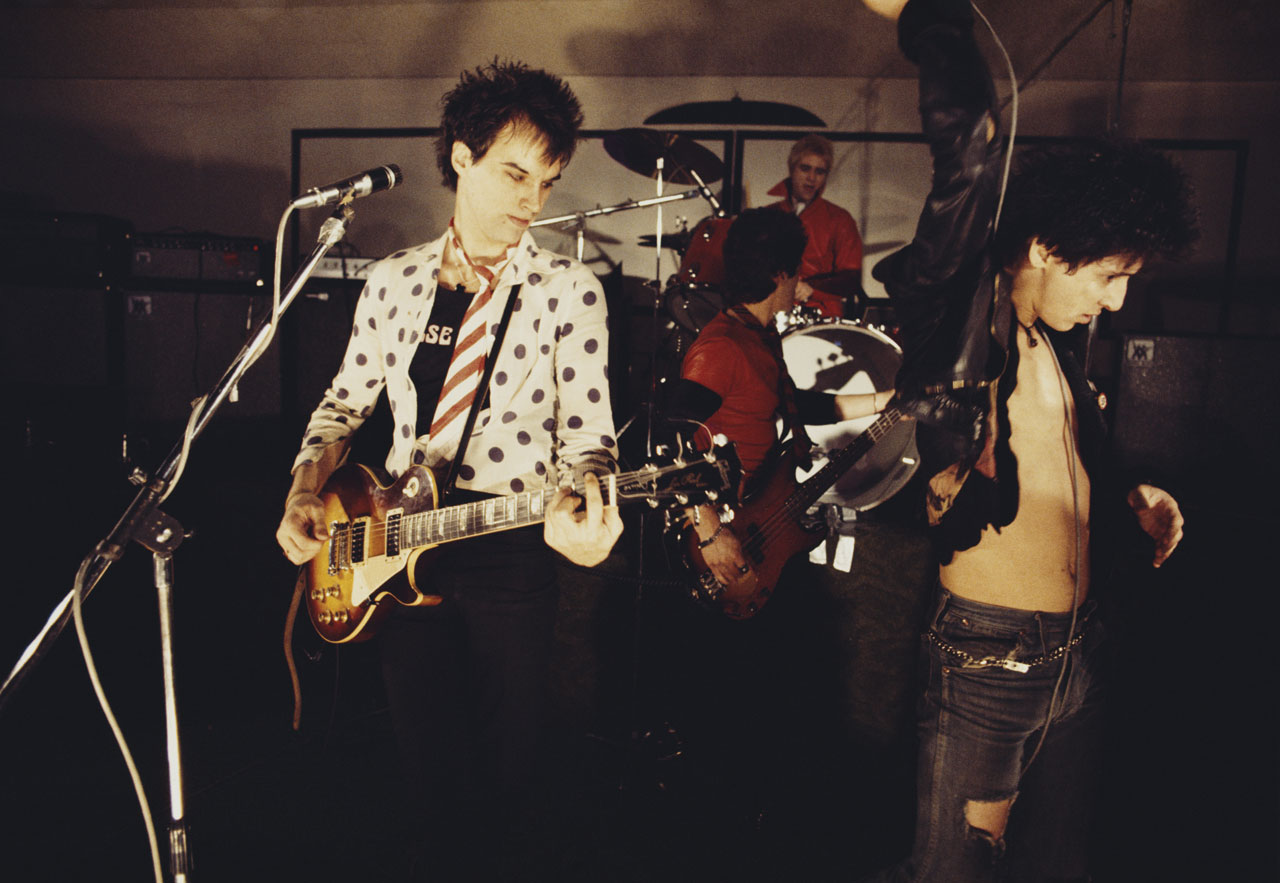
“We were always a decent performing band but we never took off all that much,” bemoans Lure. “There was no punk scene in New York any more. The eighties had gone towards the metal bands, and hip-hop was coming through.”
By the time of Rent Party, however, Lure was fully established as a Wall Street stockbroker. This unlikely career swerve wasn’t part of some grand plan, though.
“My dad had been a retail banker, like a branch manager,” he says, “but I never really wanted to go into finance – it didn’t intrigue me at all. Then sometime after The Heartbreakers had broken up I was walking around Lower Manhattan and started wondering about the whole world of money. I sort of became fascinated with it. I happened to get a job through an old friend of my father’s, consulting for various takeovers and mergers. But it was the last field I thought I’d ever get into. I had no training whatsoever.”
The job also helped him kick his addictions, though he admits that “it wasn’t overnight and there were a few nasty little surprises along the way. If it wasn’t for getting into Wall Street, I probably would’ve been dead long before. I would’ve ended up OD’ing like the rest of the guys. I spent eight or ten years of my life being strung out on that shit. In the early days of The Heartbreakers, I didn’t need heroin every day, but later on I couldn’t function without it.
It never really got to where I was absolutely desperate, though, whereas Johnny wouldn’t do anything unless he had what he needed to get together. And he’d do anything to get it. One day I was at work, went out to lunch and didn’t come back for three days, because I ended up getting arrested and had to tell them about working on Wall Street. Luckily they kept me on.”
And are there any parallels between a stockbroker’s life and being in a rock’n’roll band?
“I honestly can’t think of any,” says a laughing Lure, who never stopped playing in various groups around New York. “It’s like my walk-in closet in my room: on one side there’s my stage clothes, and on the other are my work suits. It’s like Doctor Jekyll and Mister Hyde – if you concentrate, you can do either one well.
“Life on Wall Street is so much more structured than the life I knew of in The Heartbreakers, which maybe wasn’t your typical rock’n’roll band. And money is much easier to come by.”
The word ‘survivor’ is often trotted out as a pat term for rock musicians of a certain age. But in Lure’s case it’s entirely apposite. The death of Billy Rath in August 2014 means that Lure is the last remaining link to the classic Heartbreakers line-up. The Waldos have had an uncommon share of tragedy too. “People were dying on me in the early days,” Lure says, referring to the deaths of bassist Tony Coiro and drummer Charlie Sox, as well as Lure’s younger brother, Ritchie, who would often sit in on rhythm guitar.
Lure bears all these departures with a philosophical kind of grace. He’s acutely aware that rock’n’roll can be a dangerous business, but is also reconciled to the fact that he just can’t keep away from it. Having retired from his Wall Street post in February 2015, “music has become more of a gig again these days, like it used to be, rather than just playing one-off shows around New York”.
He and his band are now frequent visitors to Europe and are currently working on a studio album. A mixture of new material and unrecorded Waldos songs, it’s due on Cleopatra Records, who recently issued The Heartbreakers’ L.A.M.F. Live At Village Gate 1977.
Forty years after they first touched down in England at that pivotal moment in punk culture, The Heartbreakers continue to exert a powerful pull in Lure’s life. In July last year, he and The Waldos topped the bill at a Johnny Thunders tribute show at New York’s Bowery Electric, celebrating his late bandmate’s birthday.
“It seemed to skip a generation in the nineties, but I get kids coming up to me now who are in their teens, saying stuff like: ‘The Heartbreakers changed my life when I was fourteen,’” muses Lure. “They weren’t even born when we made those records. Even in Japan there are all these young kids who are fanatical about The Heartbreakers. The whole thing seems to have completely revived itself, which is a great thing. It was the best band any of us had ever been in.”
L.A.M.F. & THE LAW
Fingerprint file: the story behind the L.A.M.F. album’s back-cover photos.
Original pressings of 1977’s L.A.M.F., The Heartbreakers’ debut album, came with a back-sleeve collage of police fingerprints from each of the players. This relates to a curious incident that took place at the band’s hotel in Leeds in December ’76, just hours before they joined the Sex Pistols, The Damned and the Clash on the first night of the notorious Anarchy tour.
“We were staying in this hotel, and I walked into the room where there were a couple of roadies and other people associated with the band,” Walter Lure recalls. “There was this guy in a suit, blond-ish and sort of chunky, sitting by the phone. And he had a gun. I thought: ‘What the fuck is this? No one has guns in England!’ He told me to sit down and said they’d had a report that some people were out to kill us. He’d pick up the phone every now and then, to supposedly call the police or special forces or whatever.”
Two hours later, after much subterfuge, Jerry Nolan explained that they were going to be late for soundcheck. This was the cue for the mystery man, who claimed to be from the Secret Service, to make his exit.
“After he’d left, we phoned the police, just to see what it was all about. It was only afterwards that we realised it was some sort of a crank. The real police showed up and fingerprinted the room. That’s why you get those fingerprints on the back cover of L.A.M.F. It was the weirdest fucking thing.”
Three weeks later the police called The Heartbreakers’ tour manager and told them they’d just arrested the guy in question while he was busy trying to steal a car. The handgun he was carrying turned out to be a replica.
